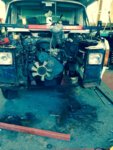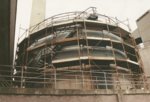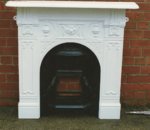I found similar with my 2004 Ducato and it was annoying that the main areas of rust were caused by the converter. Where Windows and service doors had been cut out the nibbler cuttings had been allowed to drop into the sill area and just left. The front wheel arches were bad around where the cable clips had been drilled by the converter.
I cut out the rust and found good steel pretty close to the sill sides. The rust was very localised and confined to the very bottom of the sills. I made patches with 1.0mm steel and had our local garage weld each patch in place with a seamless MIG weld. He made a great job and I treated the patches and surrounding steel with paint and waxoyl to good effect.
I did decide though that I would be chasing rust for ever so decided to sell the van. I showed the repairs to the buyer and he was quite happy with what I had done.
So, if it is repairable, I would do the repairs and decide if you want to sell it on. As said above, if there is no good steel to weld patches to then you ar goosed.
Good luck.
K.







